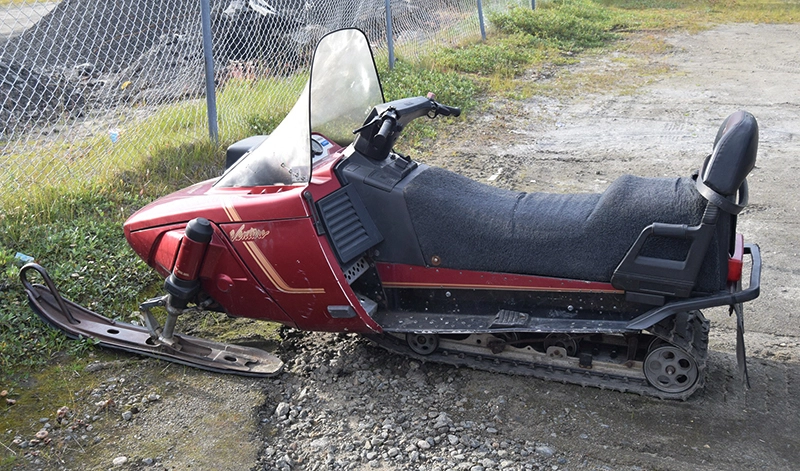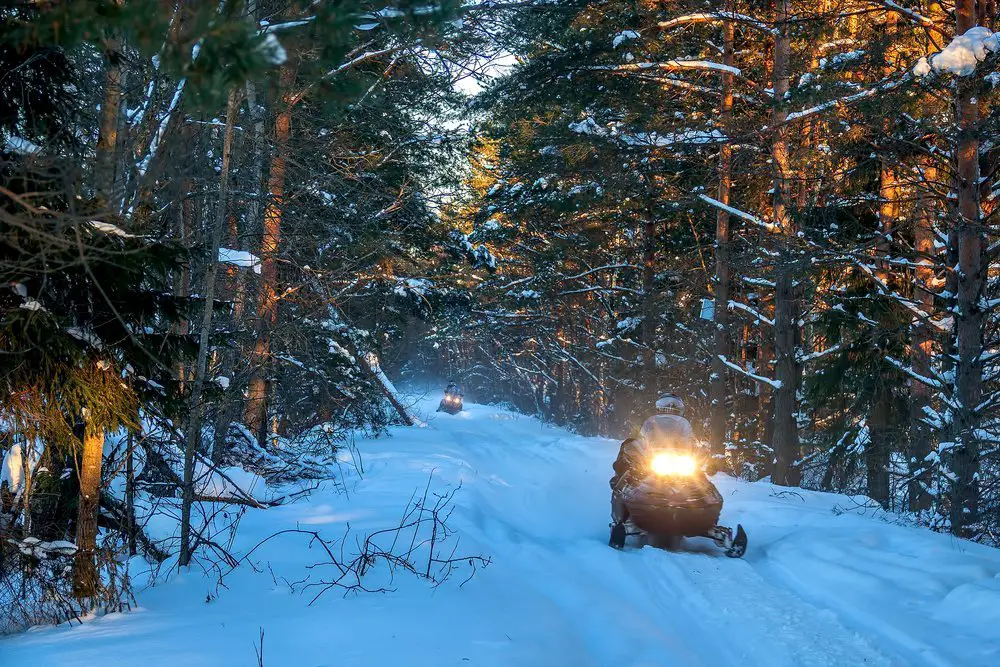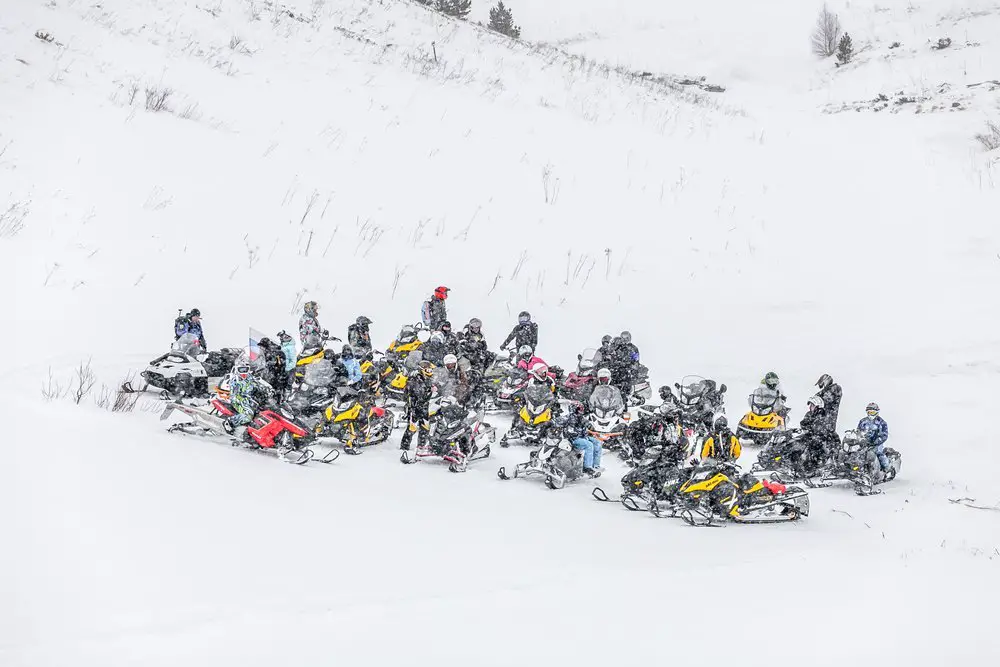Snowmobiling is a fun winter sport and activity. But when winter is up and the snow is gone, you store your snowmobile away over the spring and summer months until it’s time to get that baby out again and rip through some fresh powder.
Starting your snowmobile up after it has been sitting for a few months or especially years isn’t like starting it up as you would during the winter when it’s in use multiple times a week.
No, there are some things you need to do before starting your snowmobile after it’s sat for a while, especially if it’s an older model like my Yamaha venture.
To start your snowmobile after it’s been sitting for a while:
- Inspect spark plugs
- Oil your cylinders
- Check cylinder compression
- Check fuel and fuel lines
- Inspect and replace filters
- Clean carburetors
- Check for wildlife
- Turn the engine over
Let’s get into more detail.
Table of Contents
How to Start a Snowmobile After Sitting

If your snowmobile has been sitting for a while, these are the steps that you should follow before you attempt to start it up again. It’s important you run through these steps before firing up your engine to avoid potential damage.
1. Inspect spark plugs
Checking your spark plugs should be one of the first things you do when starting up your snowmobile after it has been sitting.
Without a spark, your snowmobile is not going anywhere. If let sitting for an extended period of time, your sleds spark plugs can become corroded and dysfunctional.
Inspect your spark plugs to see if there is any rust or corrosion going on, and if there is, replace them.
Remember, just because your plugs looks good they could still be malfunctioning, so be sure to check if your spark plugs are still producing a spark with something like an inline spark tester.
Spark plugs are super cheap and can often be the root cause of issues with your machine after it’s been sitting long term.
2. Oil your cylinders
While you have your spark plugs out, it’s a good idea to go ahead and drip some oil into your cylinders.
While your snowmobile is sitting over a period of time, the cylinders can dry up, which can lead to some issues down the road. So it’s best to lubricate your cylinders before you fire your sled up for the first time in a while.
If it’s been a few years since your sled has run, it’s recommended you use a penetrating oil and let it sit for a day or so before firing it up.
3. Check cylinder compression
This checkup is more so for those sleds that have been sitting for longer periods of times.
It’s important to perform a compression test on your engine, low or unequal compression in your cylinders is a cause for concern and often means your snowmobile is heading towards needing a top end rebuild, or a refresh if it’s not too far gone.
Performing a compression check on your snowmobile is super easy to do, all you need is a compression tester which are typically inexpensive tools.
How much compression should a snowmobile have?
The compression of your snowmobile should read between 110-140 PSI in all cylinders. If your engine reads below 110 PSI, it’s a sign that your engine needs to be serviced.
Typically, this includes getting new pistons, rings, piston pin bearings, piston pin, base gaskets and head o rings. However, what you will actually need done will vary.
4. Check fuel and fuel lines
Some of your buddies might tell you that you don’t have to worry about leaving fuel in your tank over extended periods of time, and although it’s possible to start your sled with last year’s gas in the tank, it’s rare and not good for your engine.
There are components in gasoline that will evaporate over time, the gas could also become contaminated. Both of these things lead to the gas breaking down and becoming bad gas that won’t get your sled starting no matter how many times you try and can lead to issues with your fuel lines.
It’s important that before you store your snowmobile that you siphon all the fuel out and run the sled to ensure you get all the fuel out of the lines and carburetor.
Note: If you don’t want to siphon all the gas out of your sled, you can is simply put fuel stabilizer into your tank, this will keep the fuel good while the snowmobile is sitting.
However, if you didn’t do either of these things and have fuel sitting in your sled from who knows when, you should siphon it out just the same and inspect your fuel lines for potential signs of corrosion.
5. Inspect and replace filters
While you’re working on the fuel and fuel lines, you may as well go ahead and inspect your fuel filter to ensure it’s not all clogged up and is good to go.
If you run your sled with a clogged fuel filter, it will run fine, but it will also run lean. Replacing an old fuel filter that is clogged with last year’s gas will breathe new life into your sled. It’s recommended you replace your fuel filter every season.
Do the same with your air filter.
6. Clean carburetors
Cleaning your carburetors is highly recommended as part of your yearly snowmobile maintenance. If your snowmobile has been sitting for more than a year, it’s definitely time for a clean.
Maintaining clean carburetors keeps your snowmobile running properly, avoids corrosion, and eliminates the need for costly replacements.
It’s not uncommon to run into a sticky substance that sticks to the carburetor’s walls, this tends to build up over time.
Take a look at this great video if you aren’t sure how to clean your snowmobiles carburetors
7. Check for wildlife
Rodents can make anything into their home, and our snowmobiles are no different. Mice, rats, squirrels, possum, I’ve seen it all.
Do a thorough inspection of your sled for any signs of wild life nesting away. Common areas include the exhaust and airbox.
If you do find that a critter has been living in your sled, it’s a good idea to check over all of your wires and cables to ensure nothing was chewed or damaged.
8. Turn the engine over
Now that all the pre-season maintenance is taken care of, it’s finally time to turn your engine over. But you need to take it easy at first, you can’t get ‘er going and start ripping around right away.
Start the snowmobile and let it warm up for 5-10 minutes, riding it nice and slow at a low RPM. If its extreme temperatures and on the colder side of things where you live, you may need to warm it up a little longer.


